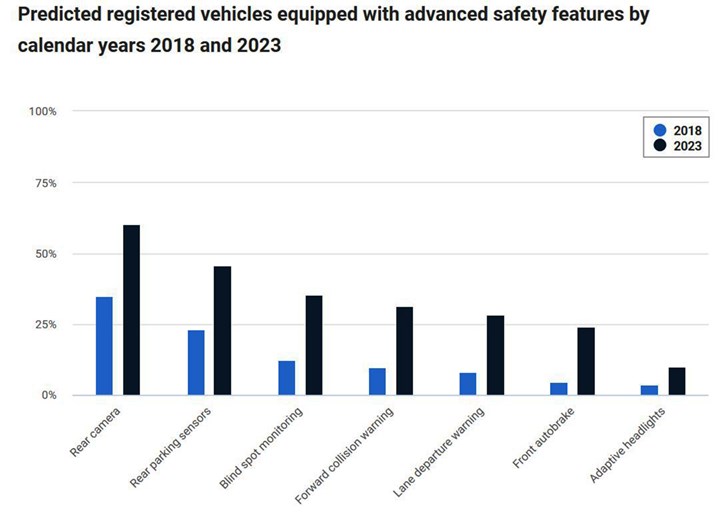IIHS Toughens Safety Ratings
Fewer vehicles likely will receive the Insurance Institute for Highway Safety’s coveted Top Safety designations in 2020.
#regulations
Some 30 cars and light trucks earned the Insurance Institute of Highway Safety’s premier “Top Safety Pick+” designation for the 2019-model year.
Expect fewer to make the cut next year. That’s because IIHS is bolstering its testing criteria again, including new requirements for pedestrian protection and more stringent crashworthiness ratings.
Shining a Light on Safety
One of the biggest changes for 2020 relates to headlights. To qualify as a TSP+ model, vehicles now must receive either a top “good” or next-best “acceptable” rating across all available headlight packages. Previously, a vehicle only had to offer such systems as an option.
This is a big deal. But first a little history. Introduced in 2016, IIHS’ headlight ratings take into account low- and high-beam performance on straight and curvy roadways, as well as glare created for oncoming traffic. In the first year, just three of the 224 headlight systems evaluated were rated good and 36 were deemed acceptable.
Automakers soon began offering advanced technologies, such as Volvo’s curve-adaptive headlamps, to improve illumination and boost their scores. It worked. In the 2016-model year, 68 out of 465 systems tested were rated good and 103 were acceptable. The problem? Many of the better-rated headlights are available only as pricey options or on higher trim levels.
IIHS says the goal of the new rules is to put safety technologies on the road, where they can save lives. Otherwise they risk being confined to product catalogs and advertising campaigns.
“Decent headlights should be a given, and we hope this change to our criteria will push manufacturers to make them standard across their lineups,” asserts David Zuby, IIHS chief research officer.
Time is of the Essence
Carmakers are introducing new safety technologies about three times as fast as they did 25 years ago, according to the Highway Loss Data Institute (HLDI), an IIHS affiliate. But the group notes that it still can take decades for such features to become widespread across the overall fleet of registered vehicles.
One example is the moderate overlap test, in which a vehicle must use only 40% of its front width to absorb the entire energy of a frontal barrier. IIHS introduced that test in 1995. Nearly two-thirds of the vehicles on the road today now have achieved good ratings, HLDI says. But it took 23 years to get there. The more recent driver-side small overlap test has yielded good scores across 14% of the fleet since it was added in 2012.

Source: IIHS, HLDI
Among six emerging technologies HLDI studied, only rear cameras are expected to be installed on more than half of all vehicles by 2023. The technology, which now is mandated, was introduced in 2002. Adaptive headlights, which currently are on about 4% of vehicles, are forecast to reach a fleet penetration rate of 10% by 2023.
RELATED CONTENT
-
U.S. in No Hurry to Regulate Autonomous Vehicles
The National Highway Traffic Safety Administration says the emerging technology involved in self-driving cars is too new to be tightly regulated.
-
Carmakers Ask 10 States to Help Bolster EV Sales
Carmakers are asking for more support for electric cars from states that support California’s zero-emission-vehicle goals, Automotive News reports.
-
Study: How States Should Update Traffic Laws for Autonomous Cars
U.S. states should require that all automated cars have a licensed driver on board, suggests a study by the Governors Highway Safety Assn.

